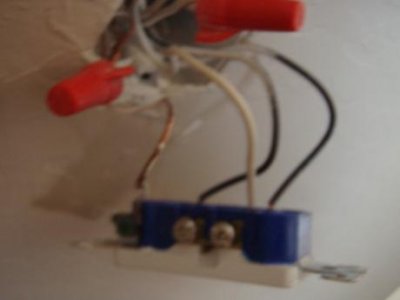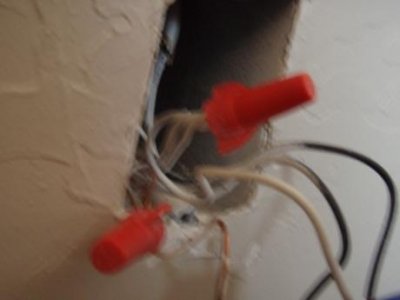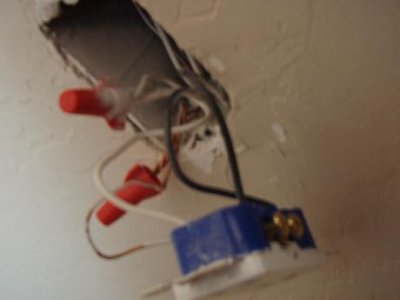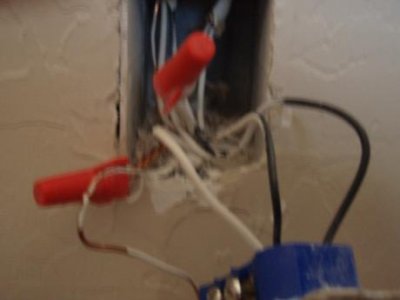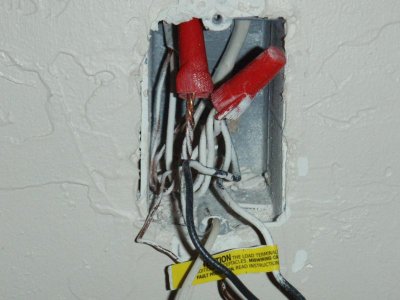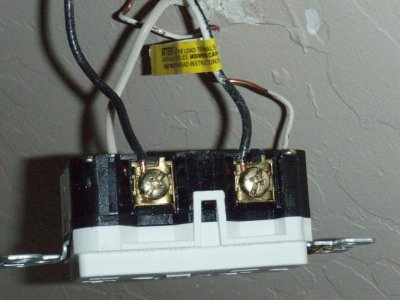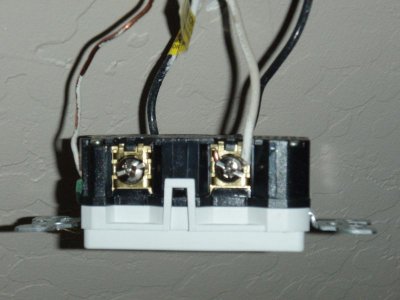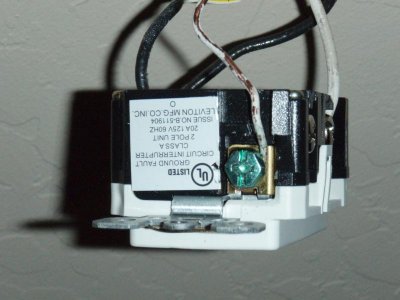Lion-o
Member
*Disclaimer* I am no good with the camera. The household camerawoman is away for the weekend 
Essentially, the 2 white wires that I would expect to be plugged into the outlet are instead wrapped up and capped off with a 3rd white wire which only plugs into the outlet once.
The black side however has two black wires plugged in. I'm not an electrician, nor do I claim to know anything about it. But I did do some circuitry stuff (Computer science) in college and I read the instructions, and this is not what I was expecting to see (either two whites/blacks or one white/black). It looks like a lazy hack job... but since I have no clue - does anybody know why they would have done it this way? Is this a common occurrence? Can I just remove the cap, separate the 2 white wires and use them the expected way in my GFCI outlet?
thanks in advance!
danny
Essentially, the 2 white wires that I would expect to be plugged into the outlet are instead wrapped up and capped off with a 3rd white wire which only plugs into the outlet once.
The black side however has two black wires plugged in. I'm not an electrician, nor do I claim to know anything about it. But I did do some circuitry stuff (Computer science) in college and I read the instructions, and this is not what I was expecting to see (either two whites/blacks or one white/black). It looks like a lazy hack job... but since I have no clue - does anybody know why they would have done it this way? Is this a common occurrence? Can I just remove the cap, separate the 2 white wires and use them the expected way in my GFCI outlet?
thanks in advance!
danny

